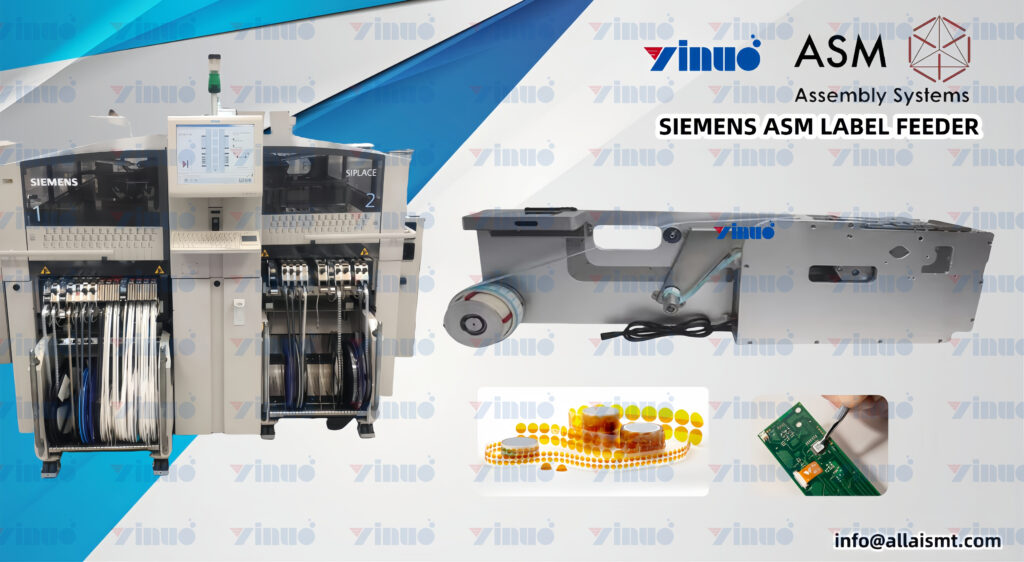How Label Feeders Enhance Inventory Management
Effective inventory management is a cornerstone of successful business operations, particularly in sectors like manufacturing, logistics, and retail. Accurate labeling is critical for tracking products, managing stock levels, and ensuring compliance with industry regulations. Label feeders, which automate the application of labels to products and packaging, have become indispensable tools for enhancing inventory management. This article explores the various ways in which label feeders contribute to improved inventory management, streamline operations, and support business growth.
The Importance of Accurate Labeling in Inventory Management
Accurate labeling is essential for several key aspects of inventory management:
- Product Identification: Labels provide essential information for identifying products, including SKU numbers, barcodes, and descriptions.
- Tracking and Traceability: Labels enable the tracking of products through the supply chain, facilitating real-time inventory visibility and traceability.
- Compliance: Labels ensure that products meet regulatory requirements, including safety warnings, expiration dates, and country of origin.
- Efficiency: Accurate labeling reduces errors and streamlines processes, from receiving and storage to picking, packing, and shipping.
Enhancing Inventory Management with Label Feeders
Label feeders offer numerous advantages that directly impact inventory management:
Automation and Speed
Automation is a significant benefit of label feeders. By automating the labeling process, businesses can achieve:
- Higher Throughput: Automated label feeders can apply labels much faster than manual methods, significantly increasing the speed of inventory processing.
- Consistency and Accuracy: Automated systems ensure that labels are applied consistently and accurately, reducing the risk of errors that can lead to inventory discrepancies.
Integration with Inventory Management Systems
Modern label feeders can be integrated with inventory management systems (IMS), enterprise resource planning (ERP) systems, and warehouse management systems (WMS). This integration provides several key benefits:
- Real-Time Data Exchange: Integrated label feeders can update inventory management systems in real-time, ensuring that stock levels are always accurate and up-to-date.
- Enhanced Visibility: Integration allows for better visibility of inventory throughout the supply chain, enabling more efficient stock management and order fulfillment.
- Streamlined Operations: Coordinating labeling with other inventory processes, such as receiving, storage, and shipping, enhances overall operational efficiency.
Improved Accuracy and Traceability
Label feeders equipped with advanced technologies like machine vision and RFID (radio-frequency identification) can enhance the accuracy and traceability of inventory:
- Machine Vision: Machine vision systems can inspect labels for defects and verify the accuracy of label application. This ensures that all products are correctly labeled and traceable.
- RFID Technology: RFID-enabled label feeders can apply RFID tags, which provide more detailed and accurate tracking information than traditional barcodes. This is particularly valuable for high-value or perishable goods.
Reduced Labor Costs and Human Error
Automating the labeling process with label feeders reduces the reliance on manual labor, leading to:
- Labor Savings: Fewer personnel are needed to manage the labeling process, allowing businesses to allocate resources to other critical tasks.
- Reduced Human Error: Automation minimizes the risk of human error in label application, leading to more accurate inventory records and fewer discrepancies.
Scalability and Flexibility
Modern label feeders are designed to be scalable and flexible, accommodating the needs of growing businesses and changing inventory requirements:
- Scalability: Automated label feeders can handle increasing volumes of inventory as business operations expand, ensuring that labeling processes keep pace with growth.
- Flexibility: Label feeders can be easily reconfigured to handle different types of labels, product sizes, and packaging formats, making them adaptable to diverse inventory needs.
Benefits of Enhanced Inventory Management
The integration of label feeders into inventory management processes offers several key benefits:
Increased Efficiency
Automated and integrated label feeders streamline inventory processes, reducing the time and effort required for labeling and tracking products. This increased efficiency leads to faster order processing and improved customer satisfaction.
Improved Accuracy
By ensuring consistent and accurate labeling, label feeders reduce the risk of inventory discrepancies. Accurate inventory records enable better stock management, reducing the likelihood of stockouts or overstock situations.
Better Compliance
Automated label feeders help ensure that products are labeled in accordance with regulatory requirements, reducing the risk of non-compliance and associated penalties.
Cost Savings
Enhanced inventory management with label feeders leads to cost savings through reduced labor costs, minimized errors, and more efficient use of resources.
Enhanced Customer Satisfaction
Accurate labeling and efficient inventory management contribute to timely and accurate order fulfillment, improving customer satisfaction and loyalty.
Conclusion
Label feeders are powerful tools that enhance inventory management by automating and streamlining the labeling process. The integration of advanced technologies, such as machine vision and RFID, along with the ability to connect with inventory management systems, ensures that businesses can maintain accurate and efficient inventory records. By reducing labor costs, minimizing errors, and improving traceability, label feeders support better stock management and compliance. As a result, businesses can achieve greater operational efficiency, cost savings, and customer satisfaction, making label feeders an essential component of modern inventory management systems.

